Interview: OMA
Giulio works, among others, on the set design for the Prada fashion shows and recently completed, together with OMA founder Rem Koolhaas, the design of Fondazione Prada’s exhibition ‘Recycling Beauty’, curated by Salvatore Settis, Anna Anguissola and Denise La Monica. Just before Prada’s FW 2023 Show, we met with Giulio to discuss the importance of adaptive spaces for fashion, the future of immersive design, and the ideas behind the design of the ‘Recycling Beauty’ exhibition.
Culture Shifts: Hi Giulio, could you tell us more about your professional background?
Giulio Margheri: Hi! I am an Italian architect with a master’s degree in architecture from the University of Florence, in my hometown. I have worked as architect in Florence, Ljubljana and Amsterdam, as researcher at Strelka Institute in Moscow, and in 2015 I joined OMA. My work in the office switches between OMA and AMO, the office’s think-tank, and focuses on what I would call ‘ephemeral projects’ – temporary installations, interior design and small-scale architecture projects. Our team also produces publications and videos, and has experience in curation and product design.
CS: What projects have you been working on at OMA and AMO, respectively?
GM: The distinction is rather blurry. The work of OMA and AMO often overlaps; sometimes we start a project under AMO with research, and when it moves onto design, even just a temporary installation, it then becomes an OMA project.
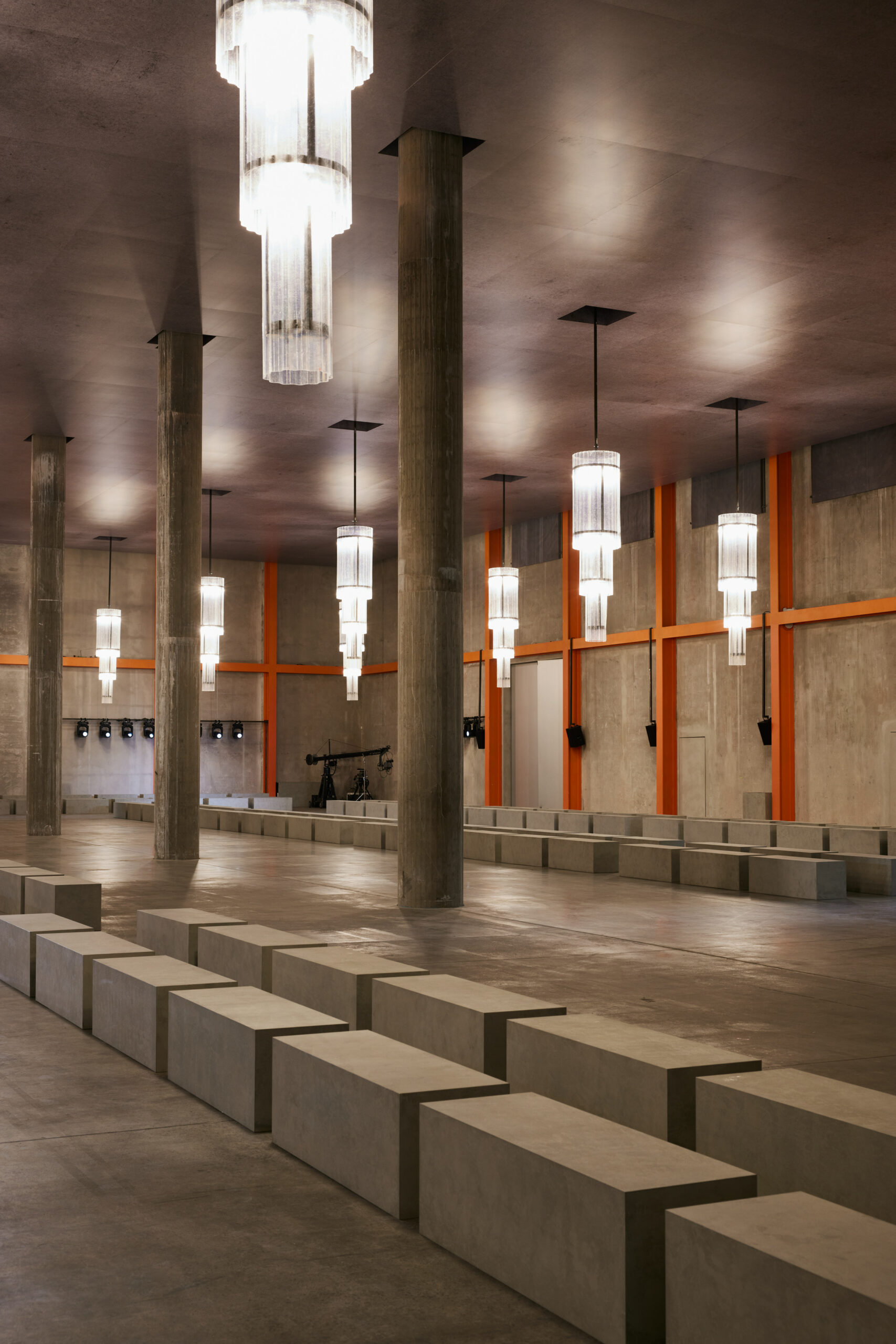
Prada FW2023 Menswear Show, Photography by Agostino Osio and Alberto Moncada, courtesy OMA and Prada
CS: We would like to know more about your work for the fashion industry, for instance Prada. Where does the conception of space fit into the brand’s universe and marketing strategy?
GM: Designing fashion shows is a fascinating field, and is playing an increasingly important role in the competition among brands. When OMA first started working on fashion shows around 2006, fashion shows were no more than simple installations with chairs or benches for a limited number of guests. Meanwhile, the shows have become more complex, accommodating more guests, incorporating live streaming and creating an immersive experience which requires a very sophisticated infrastructure. There used to be only a handful of brands that paid attention to the space in which their collection was presented, but now it’s part and parcel of the brand image. And every brand defines its own style, working with their preferred collaborators. Ultimately, set design has become as powerful as the collection, and people like Miuccia Prada and Raf Simons are involved in both the design of the collection and the space. In the show, the collection and the space come together to create the experience that defines the season’s image. This is quite a magic moment to see.
CS: Let’s talk about what OMA and Prada share together. What drives every project?
GM: We are fortunate to have a such a good, long-standing client like Prada. But this is by no means is something we take for granted. With every project, in a way, we start from scratch. We aim to test new ideas and continuously push the boundaries, and that is something we share with Prada. Sometimes it can be stressful, but this is what keeps the project fresh and innovative, and ultimately this is what drives the success of our relationship.
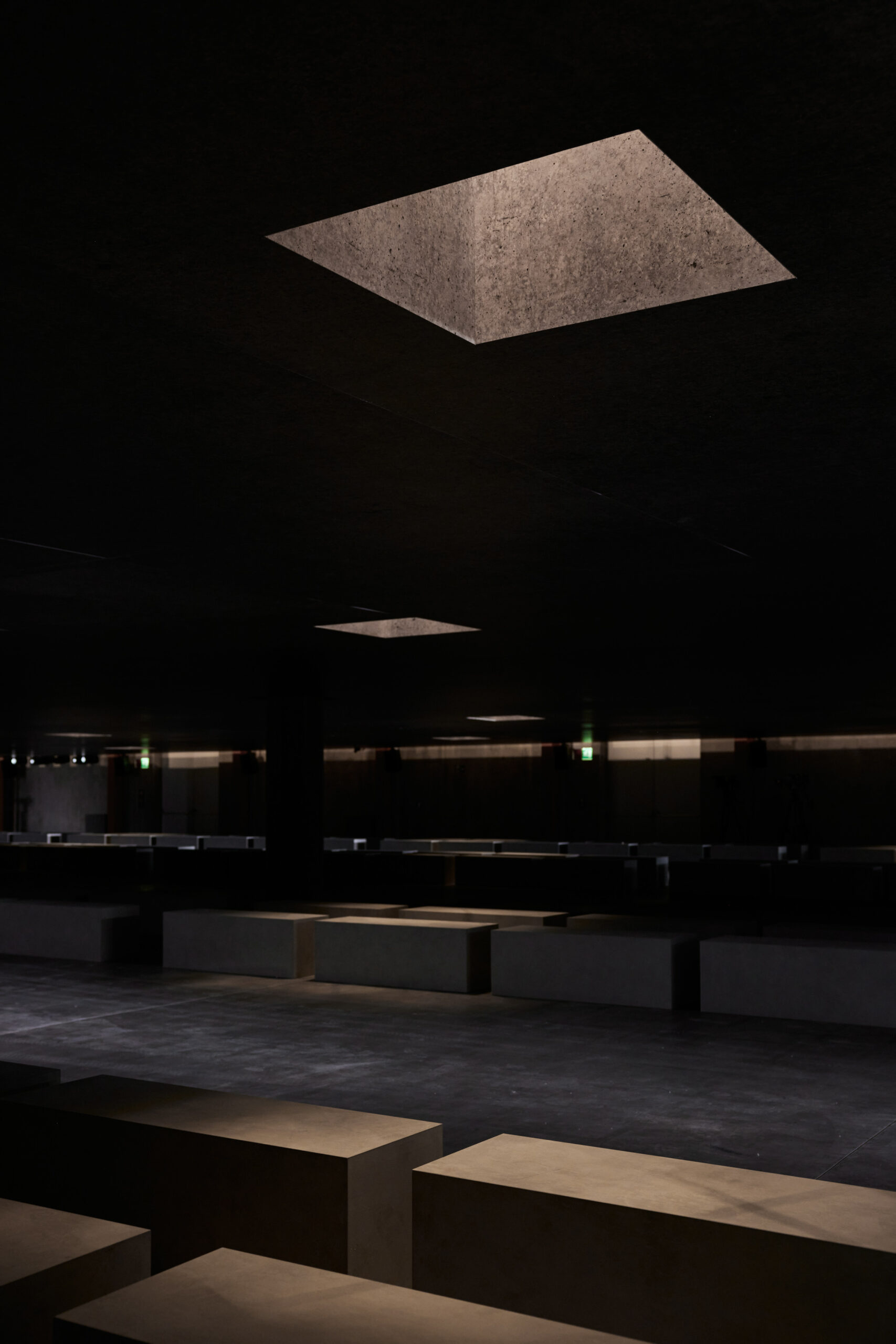
Prada FW2023 Menswear Show, Photography by Agostino Osio and Alberto Moncada, courtesy OMA and Prada
Ultimately, set design has become as powerful as the collection.
CS: How do you work in terms of sustainability for exhibition design? What happens to all the used material after the show has ended?
GM: Sustainability, especially in recent years, is an increasingly important subject in the design of temporary installations and it has also generated an interesting parallel business. There are companies that specialize in dismantling sets and ensuring that the materials are reused, for example in art projects. This provides a different approach to sustainability, focusing not only on using sustainable materials, but also on giving materials a longer life. When working with Prada, we try to source the material locally, reduce shipping, and extend the lifespan of the sets beyond a single show. Some sets have been reused for dance plays or lectures; in other instances, the materials have been donated to art schools and used for students’ own projects.
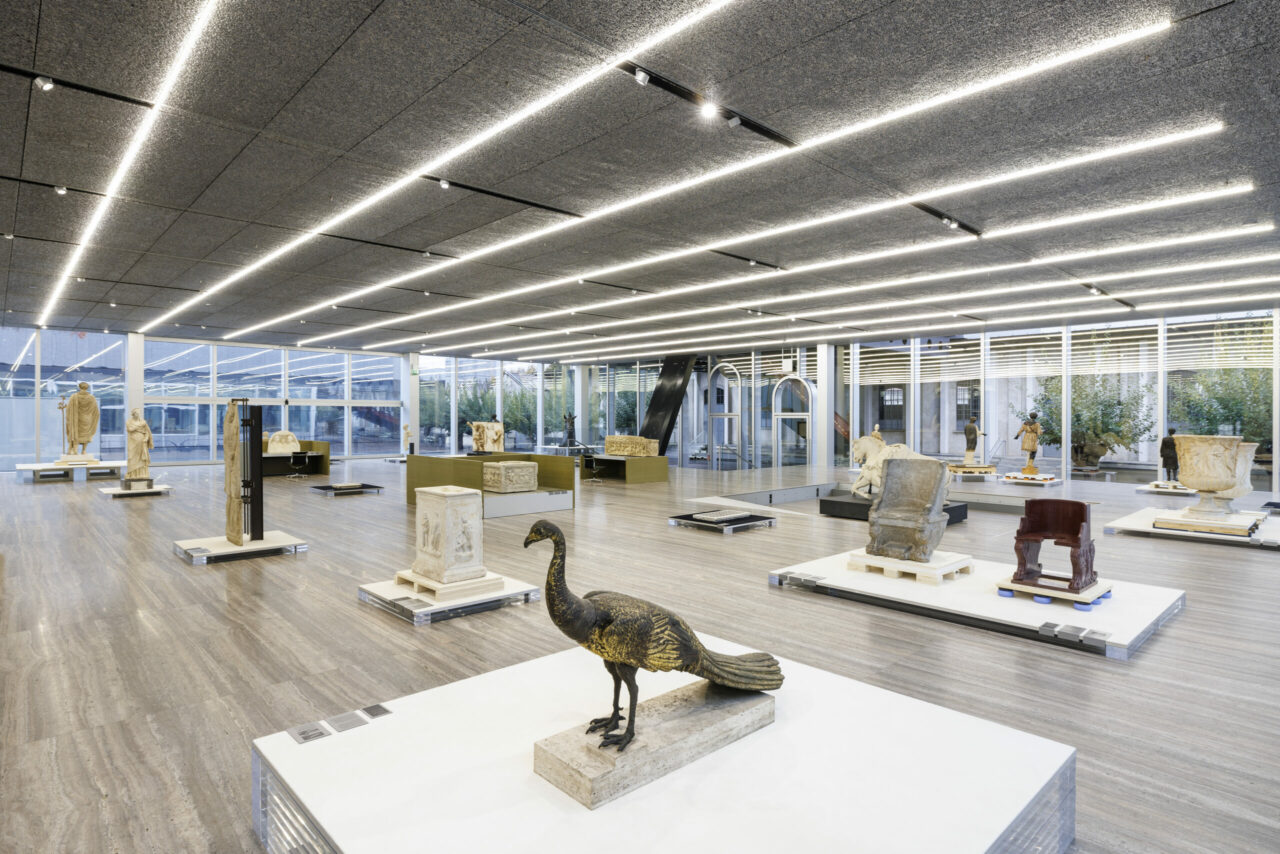
Exhibition view of “Recycling Beauty” Fondazione Prada, Milan Photo: Roberto Marossi Courtesy: Fondazione Prada. In the foreground: Peacock Age of Hadrian (130–140 CE) Vatican City, Musei Vaticani, Braccio Nuovo
The future fashion show design is influenced by the growing trend towards digitalization and the Metaverse.
CS: What is the future of design for exhibitions and fashion shows? Can you observe general shifts from the way it has been approached so far?
GM: Right now, the future fashion show design is influenced by the growing trend towards digitalization and the Metaverse. The COVID-19 pandemic has forced the fashion industry to rethink the format of fashion shows, leading to a surge in innovative ways to present the collections, like puppet and mannequin shows, and digital presentation. However, the fashion industry still relies heavily on in-person events and as soon as the restrictions of the pandemic were lifted it has gone back to what it did before. And so did we. But perhaps with a slightly different touch than our pre-COVID-19 designs. For Prada’s last two shows we designed a space in which the ceiling moves up and down almost imperceptibly as the models walk through the room. This introduced an element of dynamism that owes something to the experiments we have done with the set design when the show could only be watched on the screen.
CS: How did you work on the exhibition ‘Recycling Beauty’? What challenges have you faced in the design?
GM: For ‘Recycling Beauty’, we encountered a different set of challenges, but we were fortunate to work with a curatorial team that was interested and involved in the design process. One challenge we faced was the sheer difference in scale among the artifacts that were to be exhibited. Some were as small as few centimeters like the Tazza Farnese, and others as large as few meters like the reconstruction of the Colossus of Constantine, which measures more than eleven meters in height. Another challenge was how to exhibit the pieces in a way that encourages different levels of engagement. Some pieces needed to be observed from the distance, even from a vantage point, like the Colossus, others had to be viewed closely; some pieces needed to be seen alone, others as part of a group, etc.
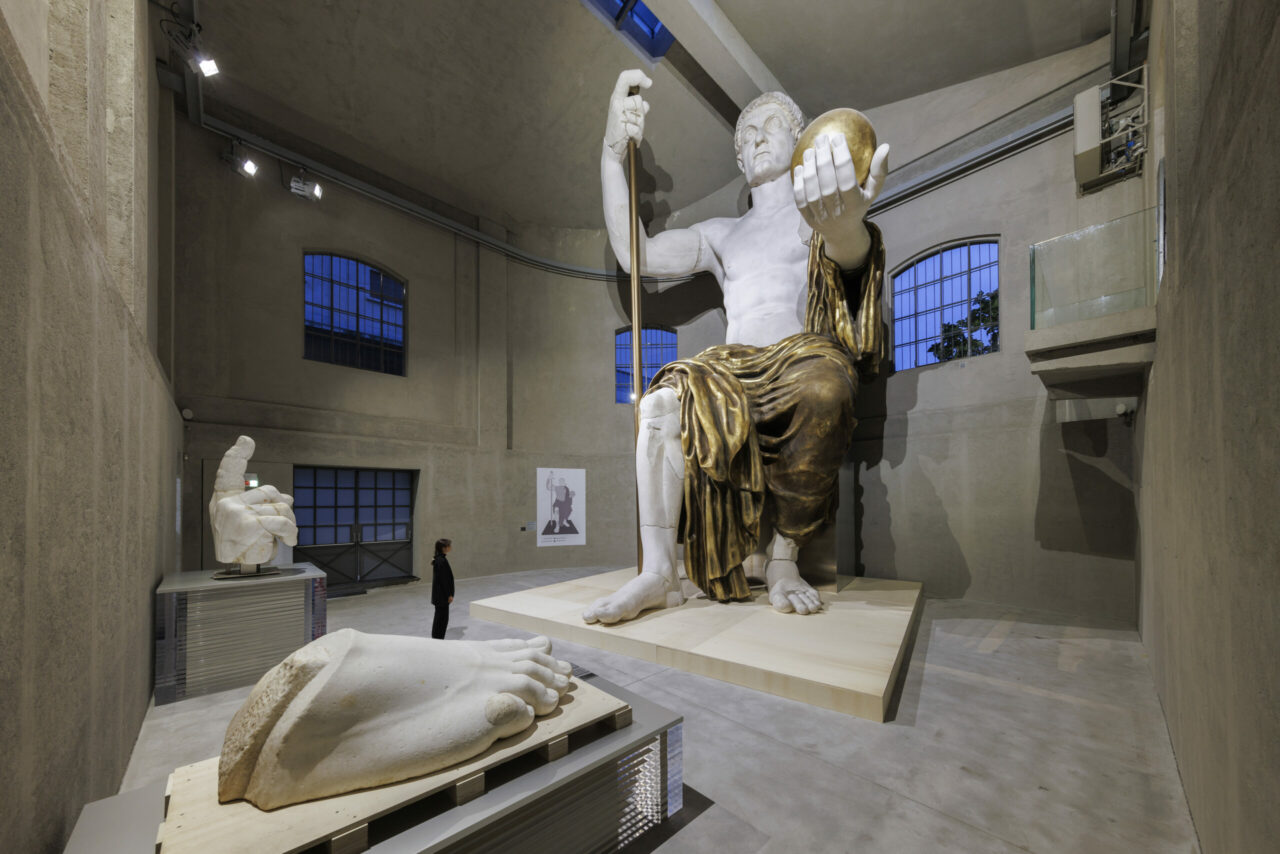
Exhibition view of “Recycling Beauty” Fondazione Prada, Milan Photo: Roberto Marossi Courtesy: Fondazione Prada. From left to right: Right hand and foot of the Colossus of Constantine 312 d.C. From the Basilica Nova (also known as the Basilica of Maxentius) Rome, Musei Capitolini
CS: Tell us more about the overall idea of the exhibition.
GM: Every piece in the exhibition represents something taken out of its original context, something that does not have the same use or meaning as when it was created. The idea of the design was to create an atmosphere of study, whereby visitors can take their time to understand the pieces, learn about their origin, and how their meaning has changed over time. We wanted visitors to be able to build a relationship with the artifacts and learn about their cultural and historical context. That materialized in the cubicles and the chairs you see in the Cisterna, which add an element of contrast not only to the pieces but also to the exhibition space itself.
CS: Today’s media environment is chaotic and fast-moving. Has display come to beat content?
GM: There is no definite answer to the power dynamics between display and content. In the ‘Recycling Beauty’ exhibition, the displays are meant to enhance the objects being exhibited, not to compete with them. Our intention was to provide another layer to the story being told, rather than detract from the artifact. We wanted to make sure they formed a meaningful alliance.
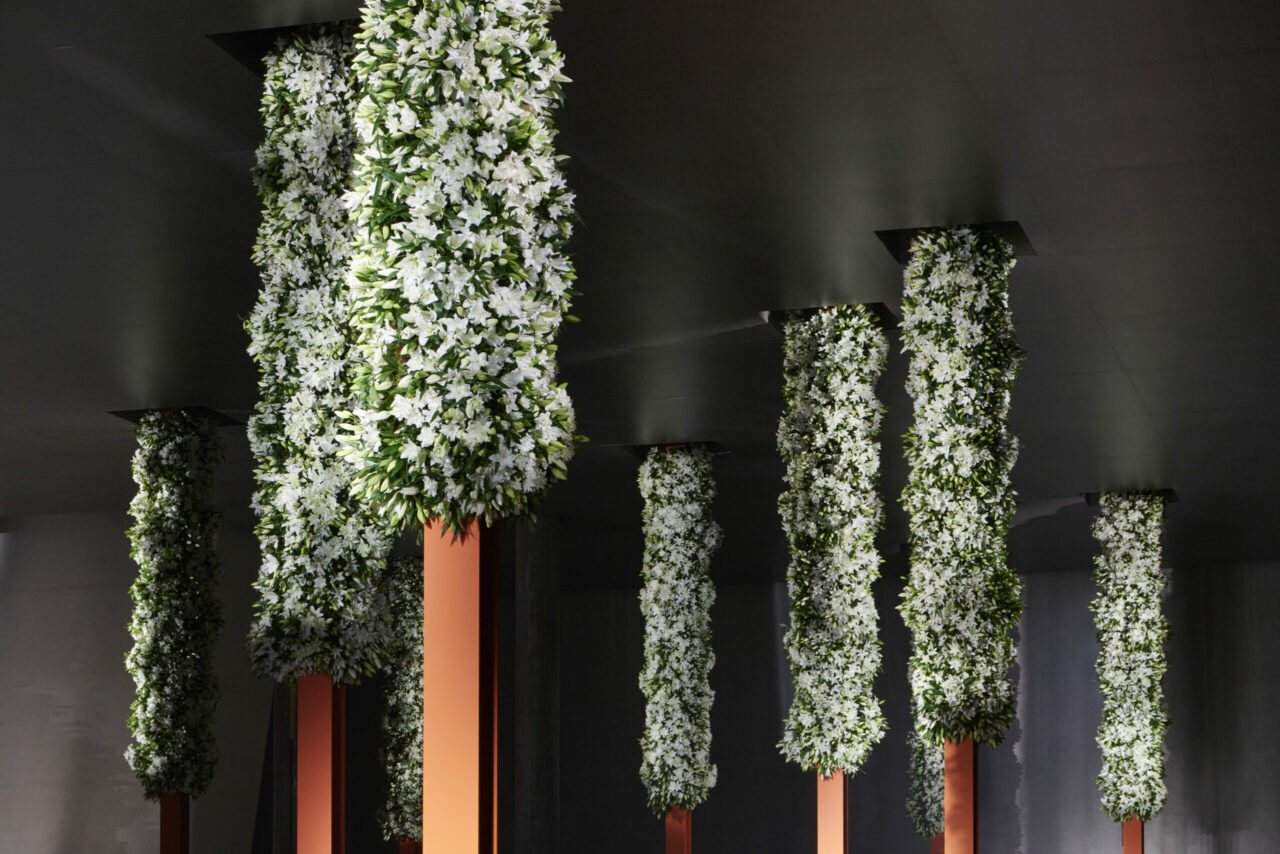
Prada FW2023 Womenwear Show, Photography by Agostino Osio and Alberto Moncada, courtesy OMA and Prada
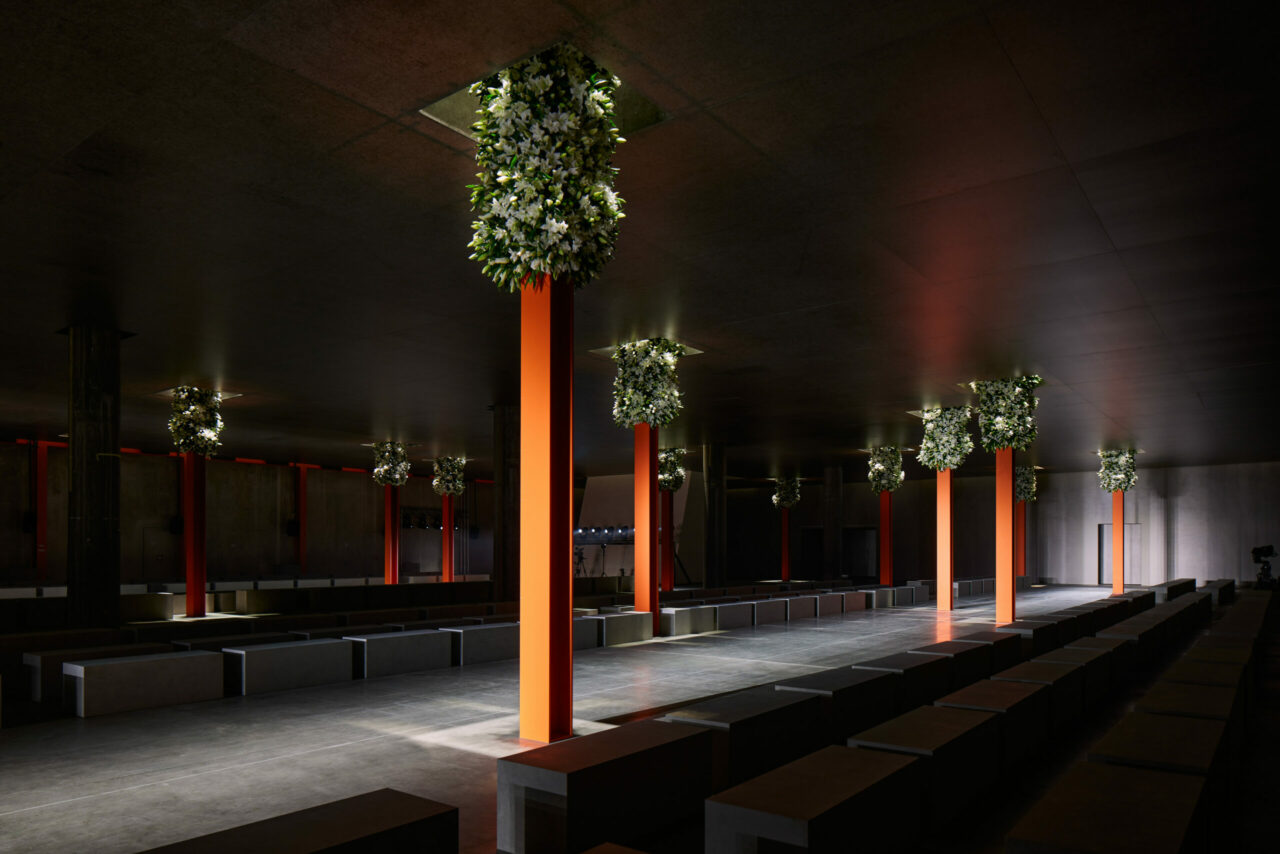
CS: What kind of spaces prove their relevance today? We experience so much digital noise and much of that seems rather ephemeral.
GM: The so-called ‘instagrammable’ factor of designs today – be it exhibitions or retail spaces – relates to something that is visually appealing but lacks substance. Projects that rely on this ‘strategy’ are indeed rather short-lived. But projects with a strong architectural concept and spatial quality will endure over time and remain relevant. The Prada stores we designed in New York City and Los Angeles in the early 2000s have stood the test of time and that is because they represent a bold statement. As retail was infiltrating all types of public buildings to the point that you could say there was no distinction between a museum and a shopping mall, we asked ourselves the question: Can a retail space be conceived as a museum, library or school? In other words, can it have the qualities of all the spaces that it has been intruding?